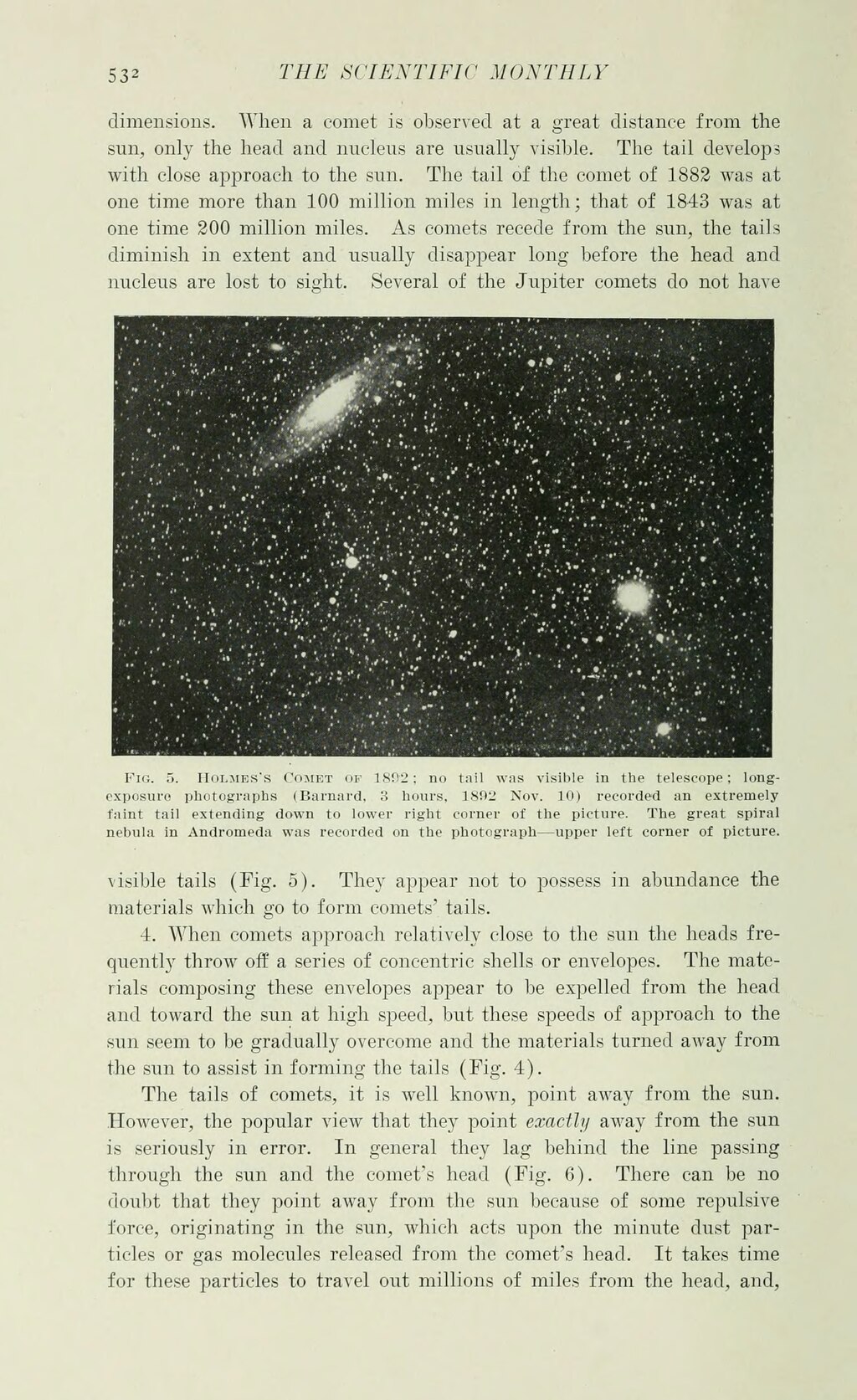S3' THE SVIESTIFIC MOXTIILY
dimensions. \Vhen a raniet is observed at a great distance from the sun, only the head and nudcus are usually visible. The tail develops with close approach to the sun. The tail of the comet of 1882 was at one time more than 100 million miles in length; that of 1843 was at one time 200 million miles. As comets recede from the sun, the tails diminish in extent and usually disappear long before the head and nucleus are lost to sight. Several of the Jupiter comets do not have
��visible tails (Fig. 5). They appear not to possess in abundance the materials which go to form comets' tails.
4. When comets approach relatively close to the sun the heads fre- quently throw off a scries of concentric shells or envelopes. The mate- rials composing these envelopes appear to be expelled from the head and towani the sun at high speed, but these speeds of approach to the sun seem to be gradually overcome and the materials turned away from tJie sun to assist in forming the tails (Fig. 4).
The tails of comets, it is well known, point away from the sun. However, the popular view that they point exactly away from the sun is seriously in error. In general they lag behind the line passing through the sun and the comet's head (Fig. 6). There can be no doubt that they point away from the sun because of some repulsive fon-e, originating in the sun, which acts upon the minute dust par- ticles or gas molecules released from the comet's head. It takes time for the^e particles to travel out millions of miles from the head, and,
�� �
